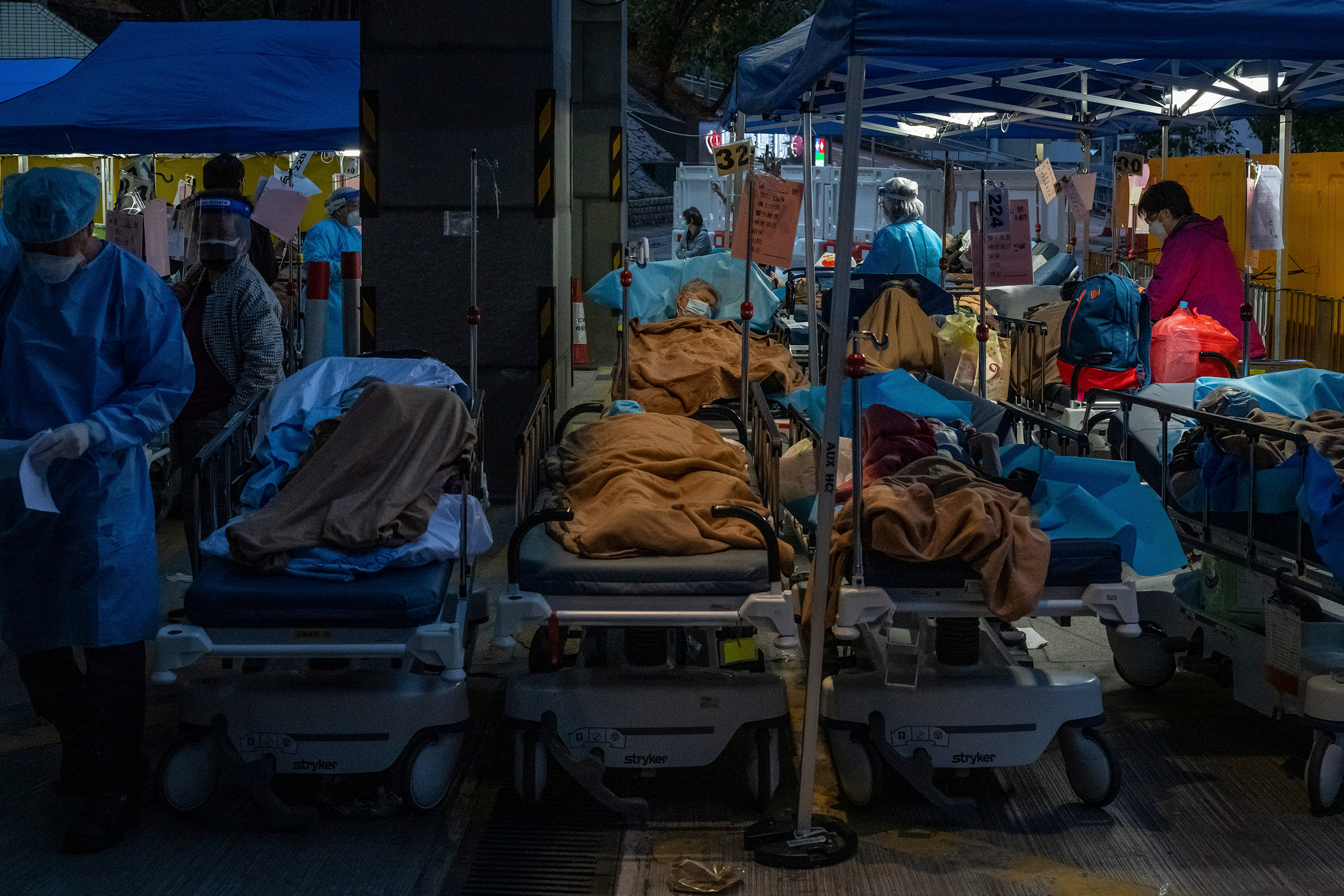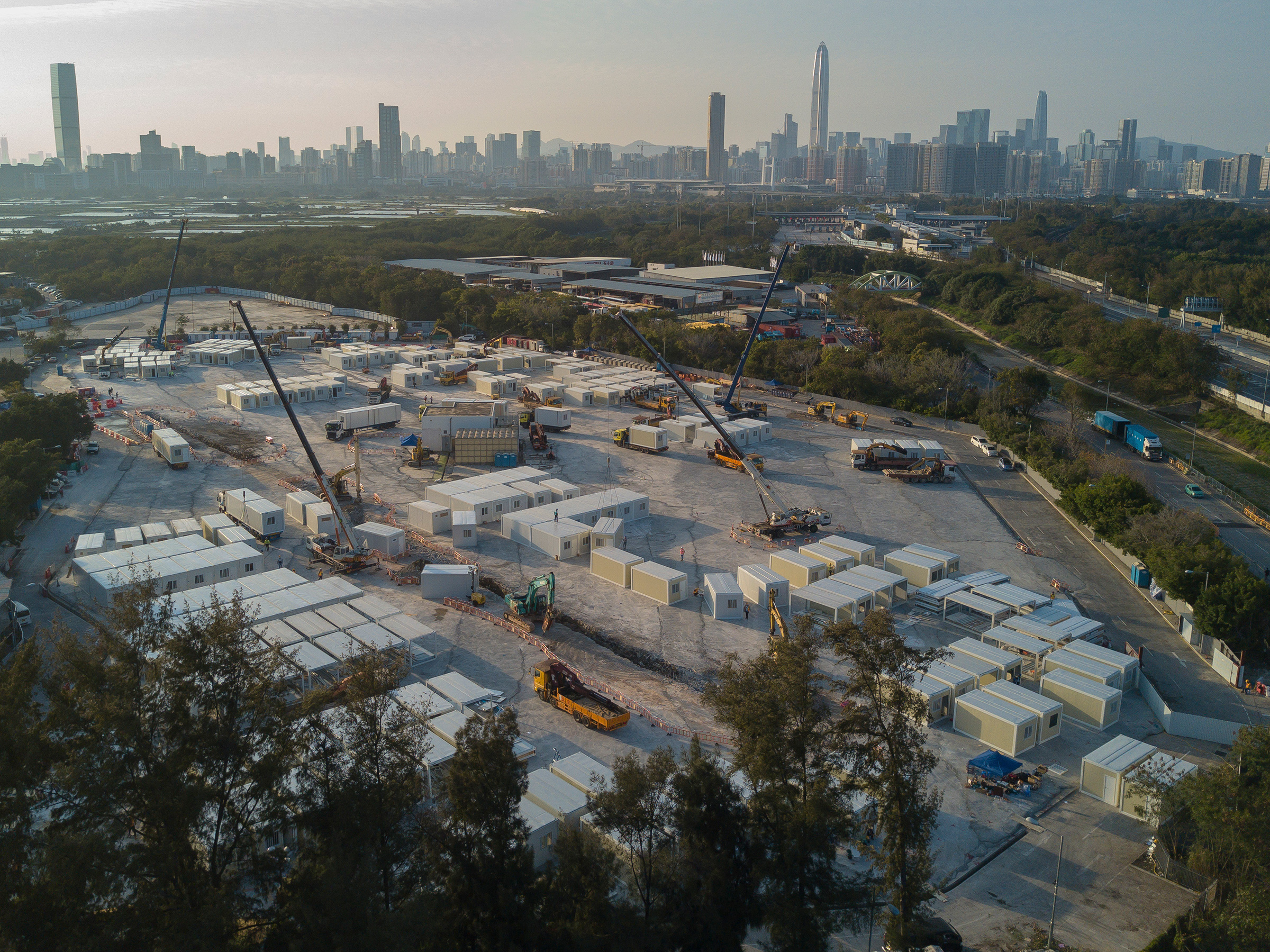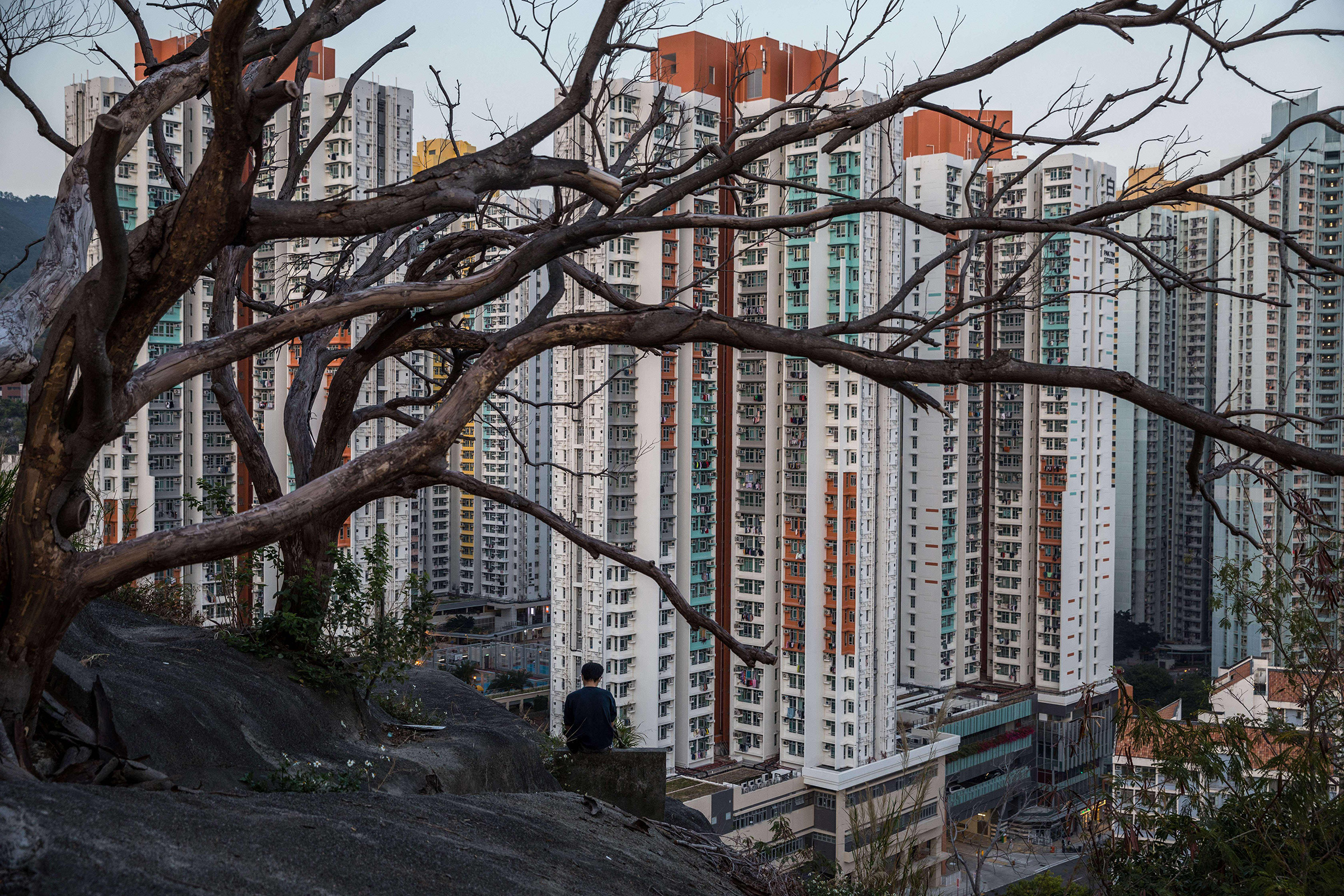
Friday, Mar. 4 was an ominous day in the history of the COVID-19 pandemic in China. Health authorities recorded 294 cases, of which 233 were imported. To countries around the world that have made the decision to live with coronavirus and tally daily caseloads in the tens of thousands, these were figures to be envied. But with its zero-COVID policy, China steadfastly refuses to allow the virus to establish a foothold within its borders.
Worryingly, nearly half the imported figure—117 cases—were recorded in China’s most populous province, the southern economic powerhouse of Guangdong. The great majority of those cases, 96, were found in the city of Shenzhen, a booming technology and finance hub that is the jewel of the province. The others were discovered in nearby cities like Zhuhai and Zhongshan—and all but two of the imported cases originated from Hong Kong, where cases have exploded, fueled by the highly contagious Omicron variant. Two days earlier, on Mar. 2, the one-time British colony recorded more than 55,000 cases in a single day and earned the ghastly distinction of being the place with the highest COVID-19 mortality rate in the developed world.
Hong Kong’s differences with China are often emphasized. It is a Chinese territory, but operates semi-autonomously, with its own legal, political, and financial systems, and issuing its own travel documents. But while Hong Kong has an administrative border with China, it and the ten other cities of Guangdong’s Greater Bay Area are physically part of one vast, contiguous conurbation of 86 million people. The office towers of Shenzhen loom over Hong Kong’s northern suburbs and the two municipalities are connected by ferry, bus, and rail services that, at their quickest, take just 20 minutes.
Read More: What to Know About BA2, the New Omicron Variant
Although only limited movement between Hong Kong and the mainland has been permitted during the pandemic, with significant restrictions on travelers, it is inevitable that Hong Kong’s COVID-19 crisis would spread to the densely populated hinterland, given its proximity. Imported cases from Hong Kong have now been found in at least seven Guangdong cities and provincial authorities are scrambling to contain the damage.
The stakes are enormous. Modeling by Chinese researchers projects that hundreds of millions of infections would spread across the country, resulting in at least three million deaths, without aggressive zero-COVID policies. Given its patchy healthcare system and critically low number of ICU beds, a breach of the COVID defenses could spell disaster.
For now, most of the imported cases “will not spread infection because of the very strict precautions, the testing and the quarantine,” says Ben Cowling, who heads the division of epidemiology and biostatistics at the University of Hong Kong’s (HKU) School of Public Health. But, he warns, “the more opportunities the virus has, sooner or later, it will find a way.”
Leo Poon, head of the public health laboratory science division at HKU, agrees. He points out that even if travelers from Hong Kong present negative tests when entering mainland China, “they may still be in the incubation period” and “be able to spread the disease.”

Hong Kong’s COVID-19 exodus
There was a dramatic exodus from Hong Kong during the first two years of the pandemic, as businesses and individuals chafed under onerous travel restrictions—including a notorious 21-day quarantine—imposed by local authorities to keep COVID-19 out. The latest wave of infection is only fueling the outflow of people, as thousands choose to leave Hong Kong altogether or sit out the surge elsewhere.
Many are fleeing stringent isolation requirements that have seen babies separated from parents and people fully recovered from COVID-19 left to languish in makeshift government holding centers days after meeting discharge criteria. The mental toll of extended confinement can be severe. In February, four suicide attempts were recorded in just over 24 hours at the notorious Penny’s Bay quarantine center, which one inhabitant described as like “living inside a mad house.”
“We don’t know what the government situation is going to be like, what sort of measures they’re going to take,” Hong Kong resident Edward Zhao tells TIME. “It’s just the uncertainty of what happens in the situation where the government decides to put you in quarantine.”
The 32-year-old is eyeing New Zealand as a temporary refuge. Singapore is another popular bolt hole. Australia has also seen a recent spike, mostly from middle-aged Hong Kong residents enrolling in degree courses Down Under, in the hope that they can bring their dependents with them on student visas.
Read More: No, You Should Not Try to Get Omicron
Thousands more, however, are simply trying their luck in mainland China. Not all enter legally and undergo the mandatory two-week quarantine at a government-specified hotel. According to media reports, a few have paid people smugglers to get them across the border—potentially bringing COVID with them.
Guangdong authorities have been galvanized into action. Some cities are offering the equivalent of almost $80,000—more than four times the province’s average annual salary—as a reward for information leading to the detention of anyone from Hong Kong on the mainland illegally. Shenzhen has imposed strict lockdowns on city districts that abut the Hong Kong border. Security personnel train powerful searchlights on the coastline nightly, looking for Hong Kong’s COVID-19 refugees.
The irony is not lost on anyone in Hong Kong. Throughout its brief history, the affluent territory has been a place of sanctuary for those fleeing turmoil further north, be it war, hunger or communist revolution. The pattern of migration has never been reversed, until now.

How bad is Hong Kong’s current COVID-19 situation?
From the start of the pandemic in early 2020, to the beginning of the latest surge on Dec. 31 last year, Hong Kong registered a little over 12,000 infections and some 200 deaths in a population of 7.4 million. Harsh travel restrictions may have virtually cut the city off from the world, but they allowed Hong Kong to avoid the dangerously overburdened healthcare systems and high death tolls caused by the coronavirus elsewhere. The local economy even rebounded in 2021, with a 6.4% gain wiping out the 6.5% contraction of the year before.
These days, however, Hong Kong’s COVID-19 defenses are in stunning collapse. In just over two months, cases have soared to more than half a million and deaths have increased tenfold. Bodies are piling up in ER departments because mortuaries are full. Hospitals are bursting with COVID-19 patients. Hundreds of thousands have lined up for hours, in all weather, for mandatory tests, ordered if contact tracers deem somebody to be the close contact of a case. (The results can take more than 10 days to arrive however, severely undermining their usefulness.)
Hong Kong’s desperately overcrowded housing—which can see as many as eight people share a 200 sq. ft. apartment—meanwhile makes self-isolation a luxury. Some people testing positive are sleeping in tenement stairwells, or in parks, to avoid infecting loved ones. The government’s equivocal messaging on whether or not a lockdown will be imposed has sparked waves of panic buying, with supermarket shelves stripped bare. Adding to the confusion, neither Hong Kong’s top official, Chief Executive Carrie Lam, nor the health secretary, Sophia Chan, held a press conference on the crisis between Feb. 22 and Mar. 9. Hundreds of thousands of cases were recorded during that crucial period.
Read More: Don’t Expect China to Ease Its Zero-COVID Policy Soon
“The [Hong Kong] government is sending conflicting signals,” says Jean-Pierre Cabestan, professor of political science at Hong Kong Baptist University. “It’s really a mess.”
Perhaps most glaring is the failure to protect the community most vulnerable to COVID-19: the elderly. Coronavirus has rampaged through more than 80% of the city’s residential care homes for seniors, infecting over 19,000 residents and 5,300 staffers. Just 15% of care home residents have been jabbed. Unsurprisingly, nine out of every 10 COVID-19 deaths in Hong Kong have occurred among the unvaccinated, most of them over the age of 70.
Karen Grépin, associate professor in health economics and policy at HKU’s School of Public Health, says sensationalized media coverage of side effects fueled vaccine hesitancy. She also believes that early messaging from the government, which recommended seeking medical opinion before vaccination, created the idea that vaccines were only for the healthy. “The elderly and those with underlying medical conditions began to believe that they were not good candidates for vaccination,” she tells TIME via email.
The consequences have been devastating. As one local Twitter user put it, while posting a photo of patients lying on gurneys in the forecourt of an overcrowded hospital: “Hong Kong, you’ve had two years to prepare for this.”

What is China doing about Hong Kong’s COVID-19 crisis?
The central government has not hidden its disappointment in the city’s leadership. On Feb. 16, two pro-Beijing newspapers in Hong Kong ran front page stories on a message relayed to Chief Executive Lam by President Xi Jinping. He reportedly asked her to “mobilize all power and resources to take all necessary measures to ensure the safety and health of the Hong Kong people.” That the instruction was delivered so openly was considered highly significant—in effect, it was letting the Hong Kong public know that Xi had put Lam on notice.
Two weeks later, the head of Beijing’s Hong Kong and Macau Affairs Office, Xia Baolong, tersely reminded Hong Kong’s most senior officials to uphold their oaths of office. “Top Hong Kong officials must have the courage to shoulder arduous responsibility, and do a good job in organization and leadership, and fulfill their inaugural oath with concrete actions in the battle against the pandemic,” he said. A mainland expert on Hong Kong’s constitutional affairs told local media that the remarks amounted to “a warning letter” and that “the central government is saying that this is huge trouble.”
More recently, on Mar. 6, Chinese vice premier Han Zheng met Hong Kong delegates to the nation’s top advisory body, the Chinese People’s Political Consultative Conference. He told them that this was no time for “weariness” in the fight against COVID-19, expressed concern at the territory’s mortality rate, and voiced the hope that reports of Hong Kong’s private hospitals turning away coronavirus patients were “fake news.”
Shortly afterward, Liang Wannian of China’s National Health Commission appeared to rebuke Hong Kong officials, who have made compulsory universal testing the cornerstone of their strategy to tame the current surge in infections. “Reducing infection, severe cases and deaths is Hong Kong’s most urgent and top priority at the current stage,” Liang told China’s Xinhua news agency, adding that mass testing could come “after we achieve the first target.” The local administration seemingly backed down, with unnamed insiders telling local media that the exercise could be postponed for a month.
Read More: What the World Can Learn From China’s COVID-19 Rules at the Beijing Olympics
Sensing the threat that Hong Kong poses to its zero-COVID record, Beijing has involved Vice Premier Sun Chunlan, who leads the mainland’s fight against COVID-19. The deputy head of the National Health Commission, Wang Hesheng, a veteran of the original Wuhan outbreak, is assisting. According to media reports, hundreds of personnel have set up a Shenzhen command center to respond to developments in Hong Kong, working 16 hour days and authorized to cut through any red tape, given the urgency of the situation.
The coming weeks will be crucial. On Mar. 6, China reported some of its highest COVID-19 figures since Wuhan—and of the 214 new cases, nearly a third were found in Guangdong, the province bordering Hong Kong.
China’s zero-COVID strategy has been extremely successful. Since the start of the pandemic, the world’s most populous nation has registered just over 111,000 cases, with 4,636 deaths. It even managed to stage the Winter Olympics without major mishap. Could that be about to change as a result of Hong Kong’s Omicron surge?
“I would imagine in the mainland, there’ll be a lot of concern right now about the risk posed by people traveling from Hong Kong,” says HKU’s Cowling.
“There’ll be an unlucky event, where there’s transmission to, maybe, local staff in a hotel, or to local testing staff, or something—and then that will start an outbreak.”
More Must-Reads From TIME
- The 100 Most Influential People of 2024
- Coco Gauff Is Playing for Herself Now
- Scenes From Pro-Palestinian Encampments Across U.S. Universities
- 6 Compliments That Land Every Time
- If You're Dating Right Now , You're Brave: Column
- The AI That Could Heal a Divided Internet
- Fallout Is a Brilliant Model for the Future of Video Game Adaptations
- Want Weekly Recs on What to Watch, Read, and More? Sign Up for Worth Your Time
Contact us at letters@time.com